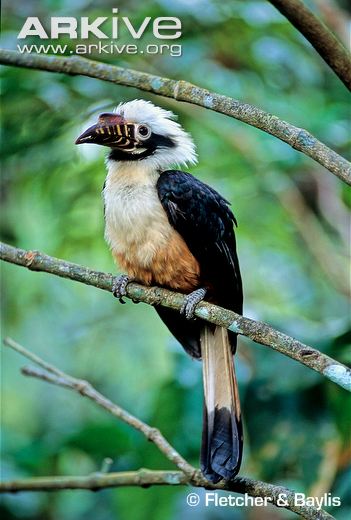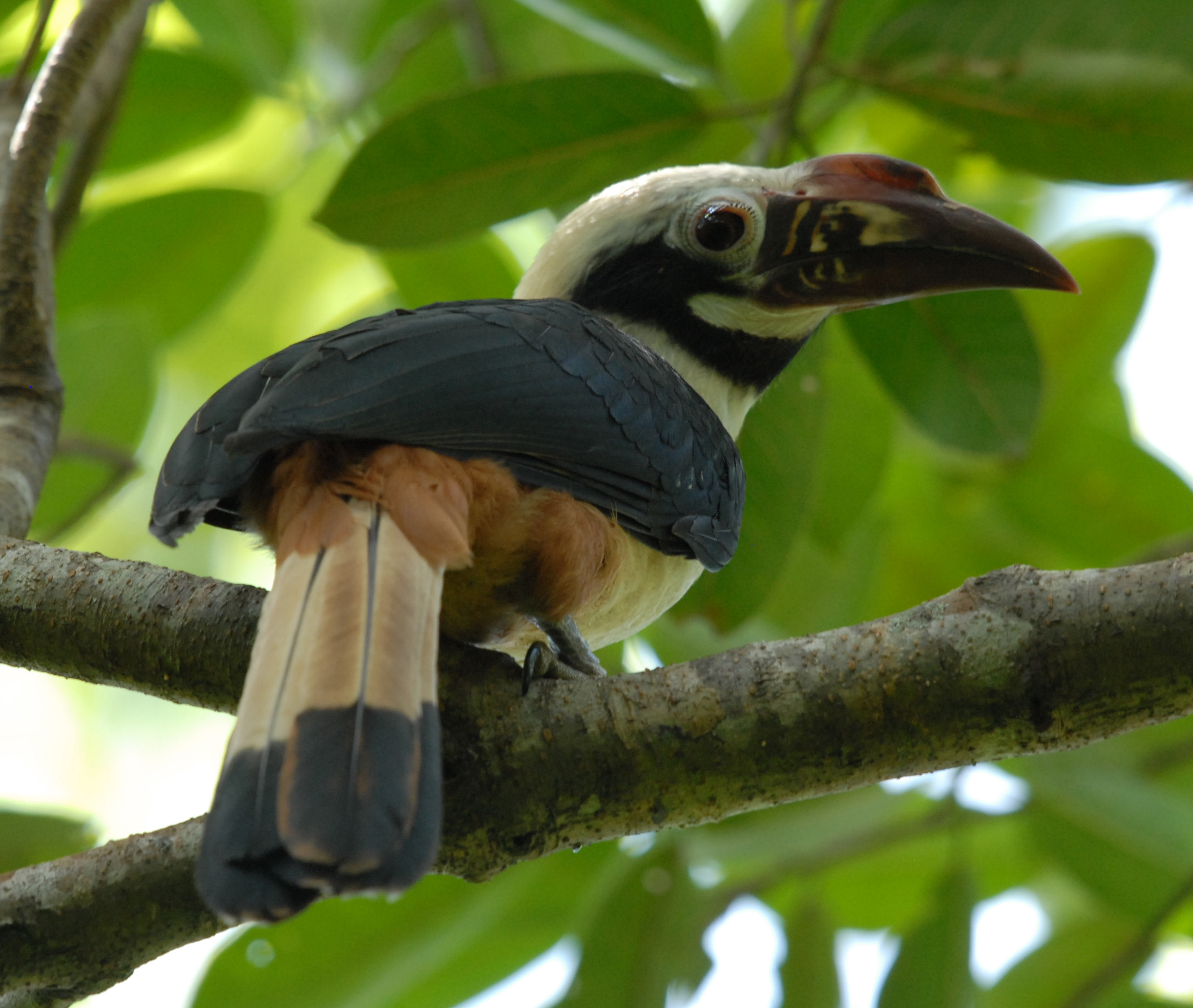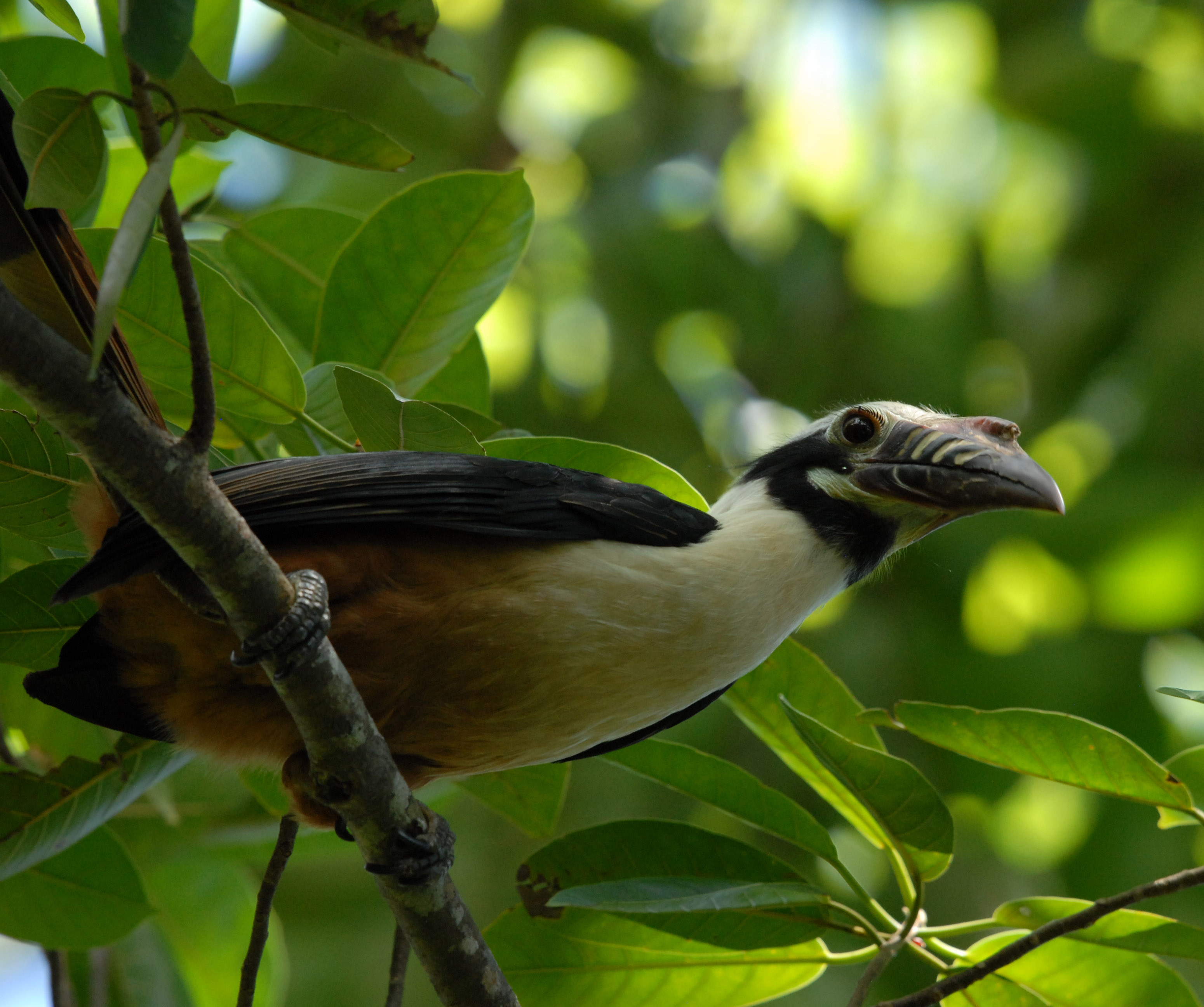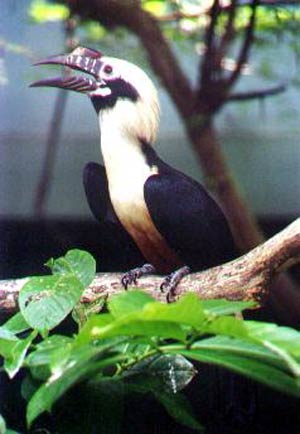
Penelopides panini
SUBFAMILY
Bucerotinae
TAXONOMY
Buceros panini Boddaert, 1783, Panay, Philippines. Two subspecies.
OTHER COMMON NAMES
English: Visayan Hornbill, Panay tarictic hornbill, rufous-tailed
hornbill; French: Calao tarictic; German: Visayan-Tariktikhornvogel;
Spanish: Cбlao Chico de Panay.
PHYSICAL CHARACTERISTICS
17.7 in (45 cm); weights unrecorded. Small in size with prominently
ridged bill. Black with yellowish head and rufous tail
and underparts; female all black with rufous tail.
DISTRIBUTION
Philippine islands of Masbate, Panay, Sicogon, Pan de Azucar,
Guimaras, Negros, and Ticao.
HABITAT
Prefers primary rainforest but will visit fruiting trees in secondary
HABITAT
up to 4,900 ft (1,500 m) altitude.
BEHAVIOR
Territorial, living in family groups of two to three and, rarely,
12 birds.
FEEDING ECOLOGY AND DIET
Omnivorous. Forages mid-canopy and at forest edge.
REPRODUCTIVE BIOLOGY
Cooperative breeder; lays two to three eggs March through
April; incubation not recorded but nesting cycle c. 95 days.
Female molts while breeding and exits cavity with eldest
fledgling.
CONSERVATION STATUS
One of the most Endangered hornbills due to habitat loss and
excessive hunting.
SIGNIFICANCE TO HUMANS
Hunted for food.
Other popular Animals
Photo Gallery of - Visayan tarictic hornbill




 Animalia Life
Animalia Life